In Running Water
When the winter gives way to a new spring, and the waters from the higher elevations finds it way down the rocky slopes, a new lease of life extends to those plants that have waited patiently for the new season.
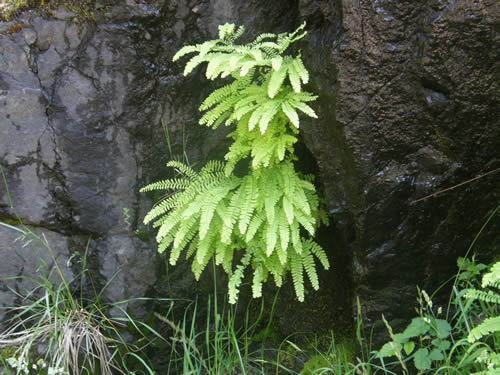 |
Ferns, along with other plants that occupy the rock face, find those little cracks and crevises that appear too small to sustain any form of plant life.
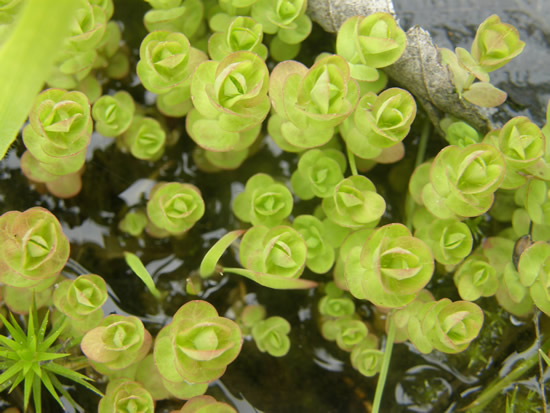
Hypericum anagalloides a native of North America, with the common name of Tinker's Penny. Shown here in early spring enjoying the water while waiting for the appearance of the small golden yellow flowers that it bares a little later in the season.
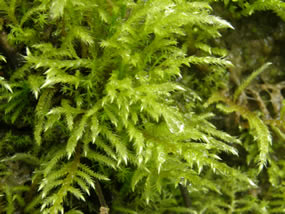 |
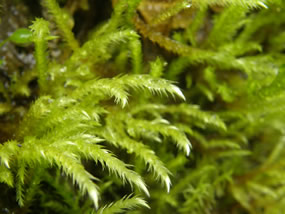 |
On the sides of rocks, and in the splash of waterfalls, new growth appears on many of our most miss understood plants. These of course are the mosses, the liverworts and ferns, and those flowers that demand water. White Feather moss, Brachythecium albicans, shown here, is one that readily accepts this type of habitat.
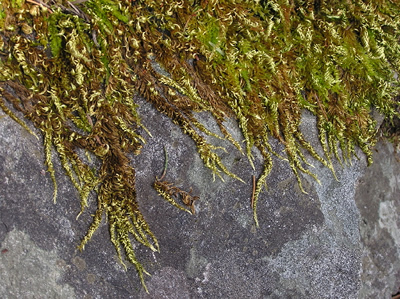 |
These mosses vary greatly in these wet conditions, from those that creep over the rock face to those that grow in the bogs that the water creates. One of those that hugs the rocks is Homalothecium Pinnatifidum shown here in the dampness that gives it life.
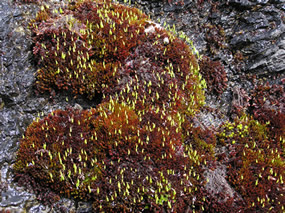 |
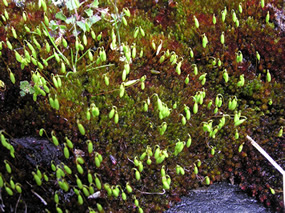 |
Glossy Red Bryum moss, Bryum miniatum, enjoys those seapage spots in the low areas of rock surfaces where the water gathers and stays a while unable to filter through quickly.
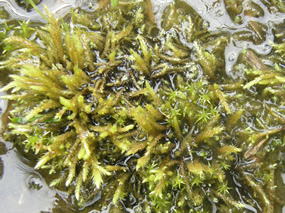 |
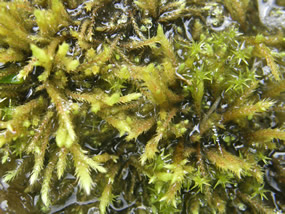 |
In the deeper waters of these seepage places Philonotis Moss,
philonotis capillaris, is one of the mosses that can be found.
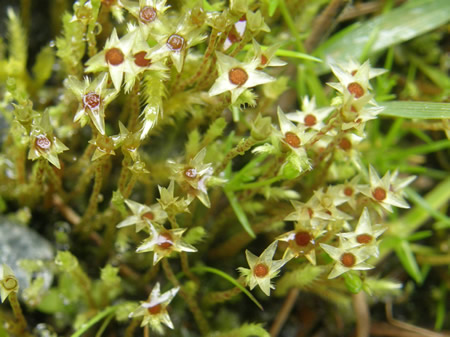 |
This is philonotis fontana. and this image shows the male flowers. Another of the mosses that that can tolerate a little water around it.
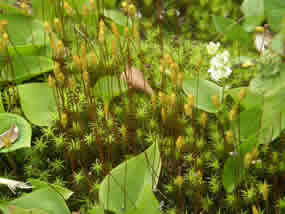 |
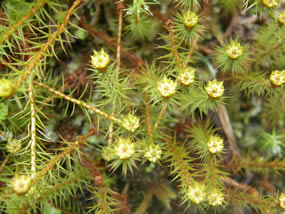 |
Polytrichum commune, The female on the left. and the male on the right. They both share the water areas along stream banks and wetlands. This plant has the common name of Haircap Moss.
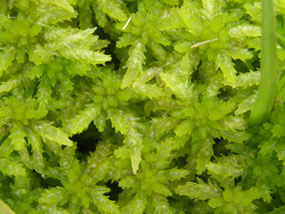 |
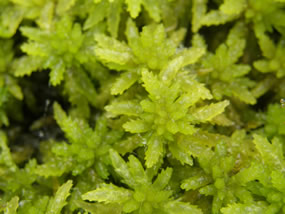 |
One of the more common mosses is the yellow green, Narrowleaf Peatmoss, Sphagnum angustifolium. It covers small areas in loose mats in fens and bogs.
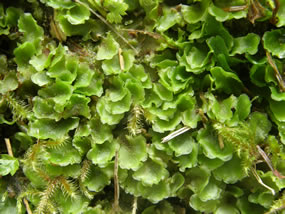 |
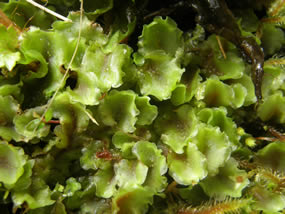 |
This is a liverwort that also enjoys the water, Pellia sp. This plant is frequently found on moist rocks and on wet streambanks in shady areas,
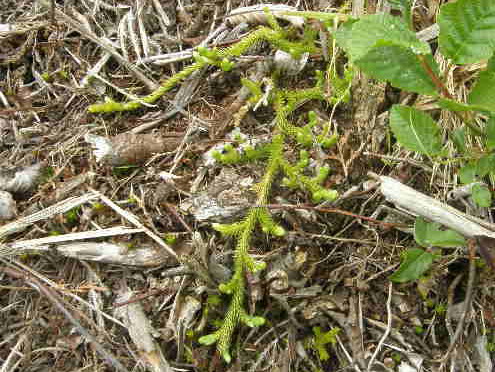 |
As the run off on the rock side subsides and the banks dry out, Lycopidum clavatum creeps slowly over the the remnents of past years.
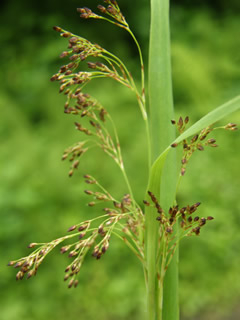 |
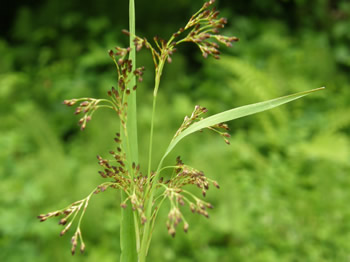 |
|
Common woodrush, luzula multiflora. |
This rush has two or three common names one of these, Many flowered Wood-rush, which describes this plant admirably. Many of the flowers are nearly stalkless but usually on stiff branches. A tufted perennial from low to higher elevations.
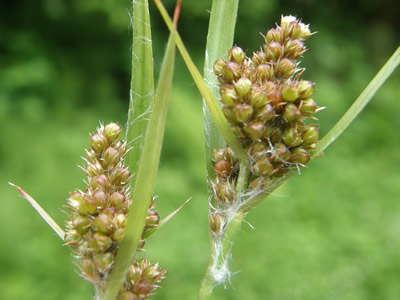 |
This Field wood-rush, Luzula campestris, is a relatively short plant. It is found on many grassland areas such as golf courses and ditches at the side of roads. The flower is a stemless cluster and is closely related to Luzula multiflors, shown earlier above. Both plants are native to large areas of North America.
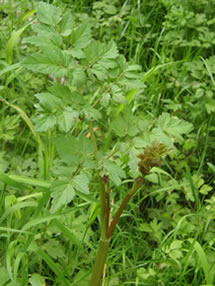 |
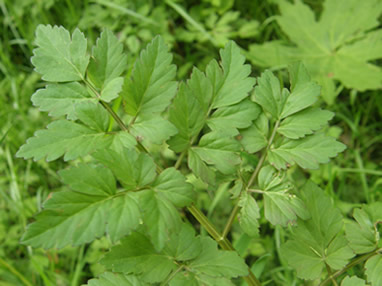 |
Another water lover is Oenanthe sarmentosa, Water parsley, which is a semi aquatic plant. It grows to three feet high with weak ribbed hollow stems. Part of the plant may root if the growth nodes touch the ground.
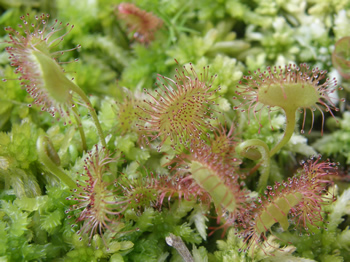 |
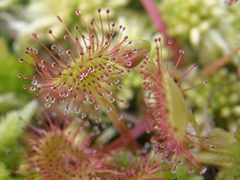 |
|
Round leaved Sundew. Drosera rotundifolia. |
One of the flowers in the wild that feeds on insects is this strange plant, the Round leaved Sundew. Drosera rotundifolia. The insects are attracted to it by the glistening bright red colour. Sweet sugar tasting drops of a liquid substance cover the leaves of this plant. It thrives in wetlands and can be found in many areas of North America including Alaska.
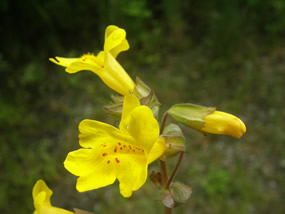 |
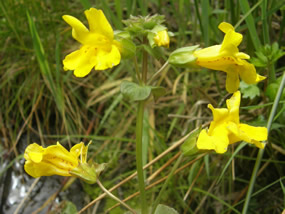 |
One of the most studied wildflowers is the common Monkey Flower, Mimulus guttatus. This flower loves the water and grows well along tha banks of steams and seepage areas. It is a well known shaped flower and can be found in western North America, it's range also includes areas like the geysers in Yellowstone and alpine meadows.
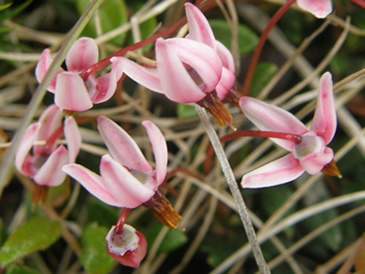 |
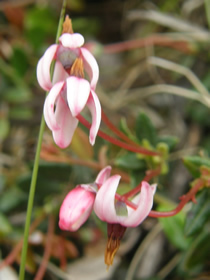 |
Oxycoccus oxycoccos. Small Cranberry flower, it is native to the bogs on the west coast and along those ditches at the side of the raods where runoff and heavy rains creates a living habitat for it. It is a trailing plant and travels freely in all directions from the roots.